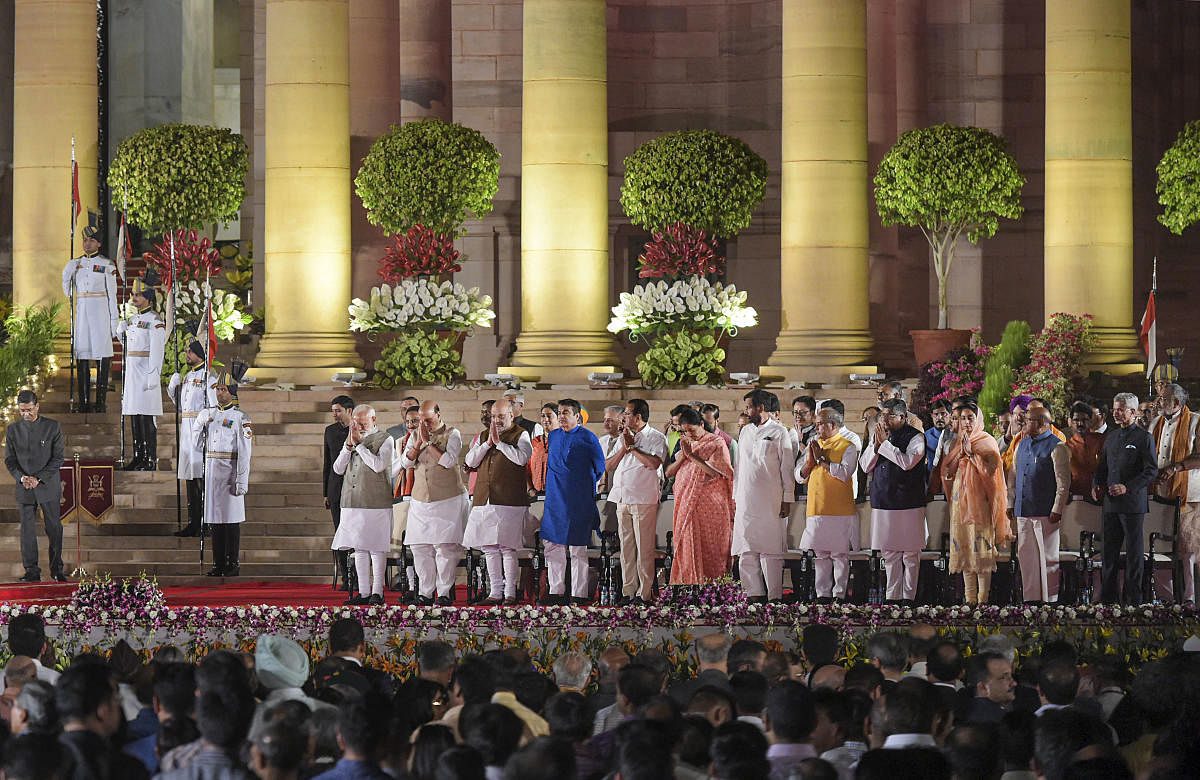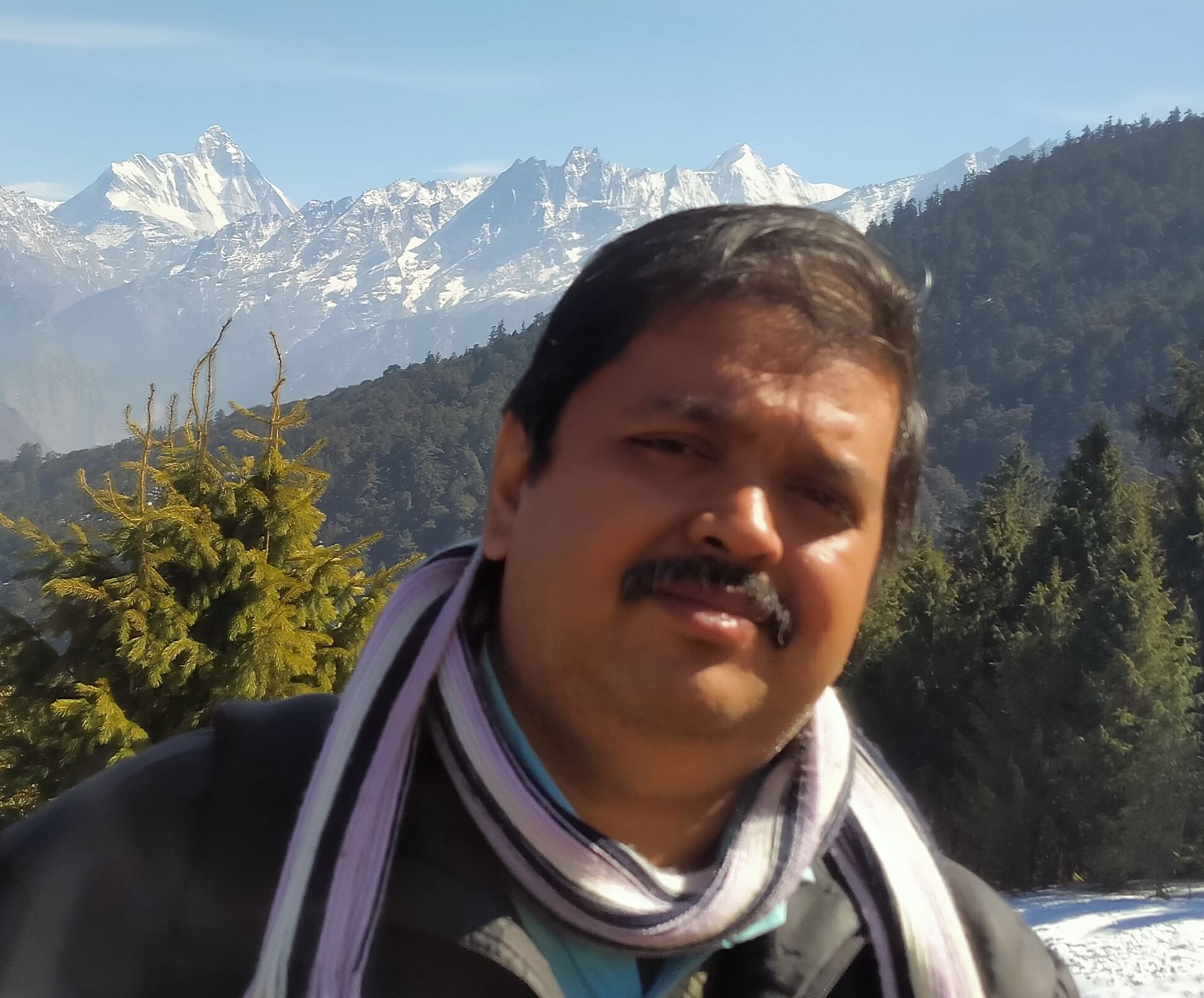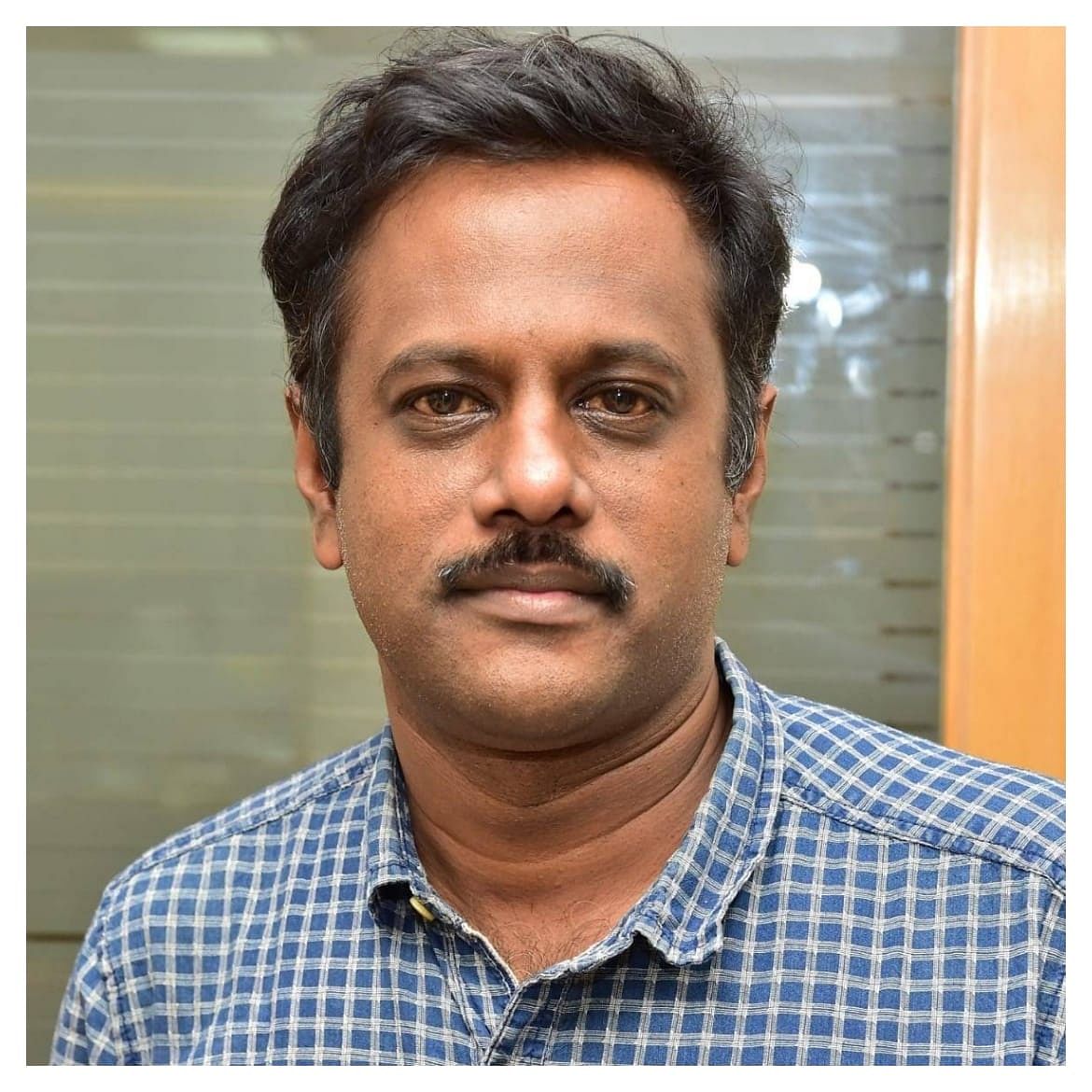
Narendra Modi on Thursday started his second innings as India's Prime Minister along with 57 other ministers at a grand ceremony at Rashtrapati Bhavan that signalled BJP president Amit Shah's ascendancy as his heir apparent.
Modi dropped 37 ministers from his first government and brought in at least 19 newcomers at the Centre, which included former Chief Ministers Arjun Munda and Ramesh Pokhriyal 'Nishank' and a surprise induction in former Foreign Secretary S Jaishankar.
At the ceremony, the Prime Minister, 24 other Cabinet Ministers, nine Ministers of State with independent charge and 24 Ministers of State were sworn in. Of this, only six were women. Modi can induct another 21 more ministers as the rules fix 81 as the upper limit for the Council of Ministers.
The swearing-in ceremony in the forecourt of the majestic Rashtrapati Bhavan in Raisina Hills with the attendance Presidents, Prime Ministers and special envoy of eight countries started at 7 PM and took another two hours to end.
Soon after the Prime Minister took oath amid supporters chanted 'Modi, Modi', Rajnath Singh was sworn-in followed by Shah.
If Shah's induction signalled the possibility of him stepping into Modi's shoes at a later stage and Jaishankar's appointment showed Modi's intentions to have professionals in his team, the absence of veterans like Arun Jaitley, Sushma Swaraj and Maneka Gandhi in the Cabinet signalled a generation shift in the party and government.
Jaitley had written to Modi to exclude him in government due to his ill-health while Swaraj, the External Affairs Minister who was boss to Jaishankar, did not contest the election. However, it was speculated throughout the day that she has made the cut and would return to the government via Rajya Sabha route. Maneka apparently lost her seat due to her not-so-great relationship with the top leadership.
ALSO READ
Seniors in the party Rajnath Singh and Nitin Gadkari made it into the Cabinet once again while second-rung leaders like Nirmala Sitharaman, Piyush Goyal and Smriti Irani too made it into Modi's team once again without any speculation.
Modi also promoted Ministers of State in his previous government Giriraj Singh, who does not shy away from making controversial right-wing comments, and Gajendra Shekhawat, who stands against former Rajasthan Chief Minister Vasundhara Raje while bringing in former Uttarakhand Chief Minister Ramesh Pokhriyal Nishank to the Cabinet. The lone Muslim face in the Cabinet is Mukhtar Abbas Naqvi.
From the allies, only LJP's Ramvilas Paswan and Shiv Sena's Arvind Sawant figured in the Cabinet as JD(U) refused to be part of the Council of Ministers as it was not happy with the BJP offer of having just one Cabinet berth. An infighting within AIADMK cost the party as it could not finalise its nominee.
In what is seen as rewarding performance, Modi also promoted Kiren Rijiju making him a Minister of State with independent charge. He was Minister of State in Home in the previous government.
Among the states, Uttar Pradesh has the highest number of nine ministers. From UP, Modi inducted its state president Mahendra Nath Pandey in the Cabinet.
While Modi is counted among the quota of UP, one of the Ministers V Muralidharan, a Rajya Sabha member from Maharashtra, could be added to Kerala where the BJP failed open its account once again. Bihar has six ministers while Gujarat has three ministers, including Shah and Irani.

